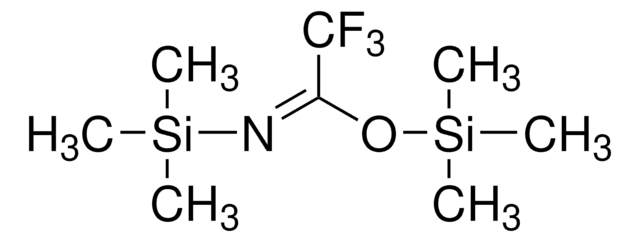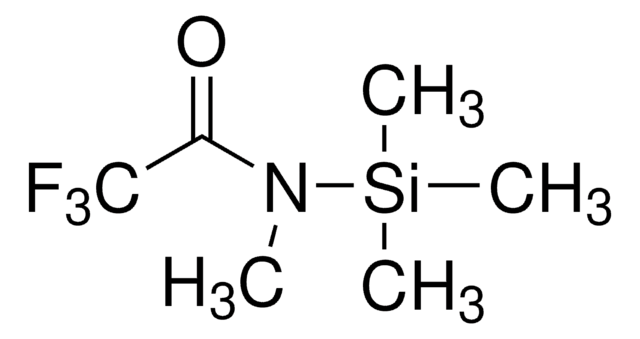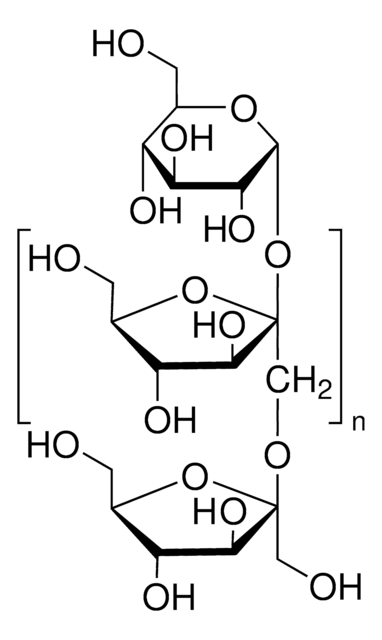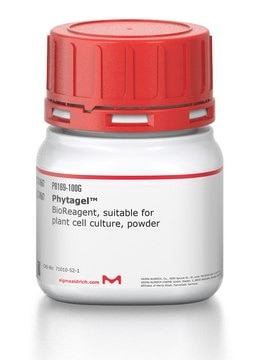B-023
BSTFA
with 1% TMCS, kit of 10 × 1 mL, analytical standard, Cerilliant®
Synonym(s):
N,O-Bis(trimethylsilyl)trifluoroacetamide, BSTFA
About This Item
Recommended Products
product name
BSTFA (with 1% TMCS), kit of 10 × 1 mL, analytical standard, Cerilliant®
grade
analytical standard
Quality Level
reaction suitability
reagent type: derivatization reagent
reaction type: Acylations
packaging
kit of 10 × 1 mL
manufacturer/tradename
Cerilliant®
technique(s)
gas chromatography (GC): suitable
refractive index
n20/D 1.384 (lit.)
bp
45-50 °C/14 mmHg (lit.)
density
0.969 g/mL at 25 °C (lit.)
application(s)
forensics and toxicology
format
neat
storage temp.
−20°C
SMILES string
C[Si](C)(C)O\C(=N\[Si](C)(C)C)C(F)(F)F
InChI
1S/C8H18F3NOSi2/c1-14(2,3)12-7(8(9,10)11)13-15(4,5)6/h1-6H3/b12-7+
InChI key
XCOBLONWWXQEBS-KPKJPENVSA-N
Looking for similar products? Visit Product Comparison Guide
Application
- Analysis of estrogenic compounds in water samples using gas chromatography coupled to mass spectrometry (GC-MS).
- Quantification of α-pyrrolidinovalerophenone (α-PVP) and its metabolites in urine samples using gas chromatography coupled to mass spectrometry (GC-MS).
Features and Benefits
- BSTFA is very versatile, reacting with a range of polar organic compounds and replacing active hydrogens with a −Si(CH3)3 (trimethylsilyl) group.
- Reacts rapidly and more completely than BSA.;
- TMCS increases the reactivity of BSTFA (or other silylation reagents).
- Amides and many secondary amines and hindered hydroxyls, incompletely derivatized by BSTFA alone, can be derivatized by adding 1-20% TMCS to BSTFA.
- Has good solvent properties and can function as a silylation reagent without additional solvents.
- Alternatively, the mixture is very soluble in most commonly used silylation solvents.
Legal Information
signalword
Warning
hcodes
Hazard Classifications
Eye Irrit. 2 - Flam. Liq. 3 - Skin Irrit. 2
wgk_germany
WGK 3
flash_point_f
75.2 °F
flash_point_c
24.0 °C
Certificates of Analysis (COA)
Search for Certificates of Analysis (COA) by entering the products Lot/Batch Number. Lot and Batch Numbers can be found on a product’s label following the words ‘Lot’ or ‘Batch’.
Already Own This Product?
Find documentation for the products that you have recently purchased in the Document Library.
Customers Also Viewed
Our team of scientists has experience in all areas of research including Life Science, Material Science, Chemical Synthesis, Chromatography, Analytical and many others.
Contact Technical Service






